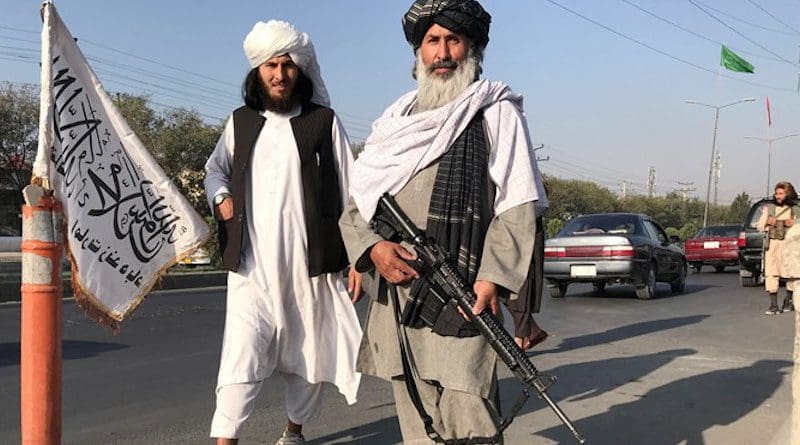The Shifting Landscape Of Security In Taliban-Controlled Afghanistan – OpEd
By Shah Khalid
Afghanistan, a land of stunning natural beauty, has long been a cauldron of conflict and political unrest. Over seven tumultuous decades, it has borne the brunt of territorial disputes and insurgencies, making it a global hotspot that commands the world’s attention. As the world grapples with a multitude of crises, Afghanistan’s security situation under Taliban rule remains an issue of paramount importance. Though Taliban claim they have a clear hold over the security situation, there are multiple challenges to them discussed here.
In the wake of the Taliban’s return to power, Afghanistan has seen an unusual calm descend across most of its territory, a stark contrast to the violent upheavals of the past. However, this newfound peace is deceptive, for beneath the surface lie complex security challenges that demand strategic management.
A defining feature of this new security landscape is the transformation in the Taliban’s own approach to governance. The dismantling of hundreds of checkpoints on major roads and highways, once a symbol of the Taliban’s control, is emblematic of their relaxed posture across much of the country. These checkpoints have been removed primarily due to resource constraints and a lack of perceived threats from the rural areas that once hosted their fighters.
However, their transition to urban policing roles has not been seamless, especially in areas where they are unpopular. As they take up residence in Kabul and chart their course for the future, the Taliban have laid out ambitious plans for an expansive security apparatus. Still, the process of building these forces is in its nascent stages and is expected to take several years to reach fruition.
Internal Insurgencies
The Taliban face not one, but two internal insurgencies. In the eastern regions and parts of the north, the group battles the Islamic State-Khorasan Province (IS-KP). In the northern regions, they also contend with elements of the former Afghan army, police, and intelligence services that they defeated in August 2021.
While the ruthless campaign against IS-KP has succeeded in diminishing its operational capacity in the east, the group has shown resilience, adapting by altering its area of operations and tactics, even extending its reach to launch cross-border attacks into Afghanistan’s Central Asian neighbors. Simultaneously, the most substantial of the northern insurgent factions, the National Resistance Front (NRF), has been gaining momentum, perhaps spurred on by the Taliban’s crackdown.
The Taliban have adopted a cautious approach to manage dormant but perilous militant groups, including al-Qaeda, TTP and other jihadist organizations with regional or global ambitions. These groups have historically found safe haven within Afghanistan’s borders. The Taliban’s efforts to deal with these groups aim at containment without provoking them to turn against their nascent government. However, this delicate balancing act was severely tested when a U.S. drone strike in Kabul killed Ayman al-Zawahiri, the leader of al-Qaeda. This event starkly exposed the contradictions inherent in the Taliban’s hosting of global jihadists who, in principle, seek to dismantle the very international system from which the Taliban now seek recognition.
When confronted with emerging security problems, the Taliban’s initial reactions have sometimes exacerbated the issues they sought to address. In certain cases, they have chosen denial as a coping mechanism, even making incredulous claims that al-Qaeda has no presence in the country. Similar denials have been made regarding the scale of local insurgencies, likely to deter their adversaries from recruitment efforts. Simultaneously, they have cracked down on dissent with heavy-handed tactics, including arbitrary detentions, torture, extrajudicial killings, collective punishment, and profiling that targets member of ethnic, tribal, and religious groups suspected of supporting insurgents or harboring anti-Taliban sentiments.
Conclusion
In sum, the security landscape in Taliban-controlled Afghanistan is in a state of flux, marked by periods of calm intermingled with pockets of violence that could intensify without effective management. The Taliban’s evolving force posture and the growing influence of internal insurgencies pose challenges that necessitate strategic thinking and measured responses.
It is crucial for the international community to closely monitor the situation and resist the temptation to resort to proxy wars or routine drone strikes. Instead, diplomatic efforts should be prioritized, with a focus on urging the Taliban to honor their security commitments and exploring modest collaboration on specific issues.
Simultaneously, the Taliban must take primary responsibility for Afghanistan’s security by professionalizing their forces, forsaking collective punishment, and enforcing their policy offering amnesty to former government officials and security forces. The path forward is complex, but the stakes are high, and the world’s collective engagement is indispensable to ensuring Afghanistan’s long-term stability and security.

